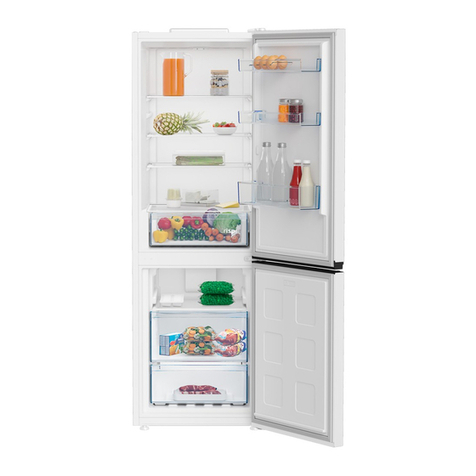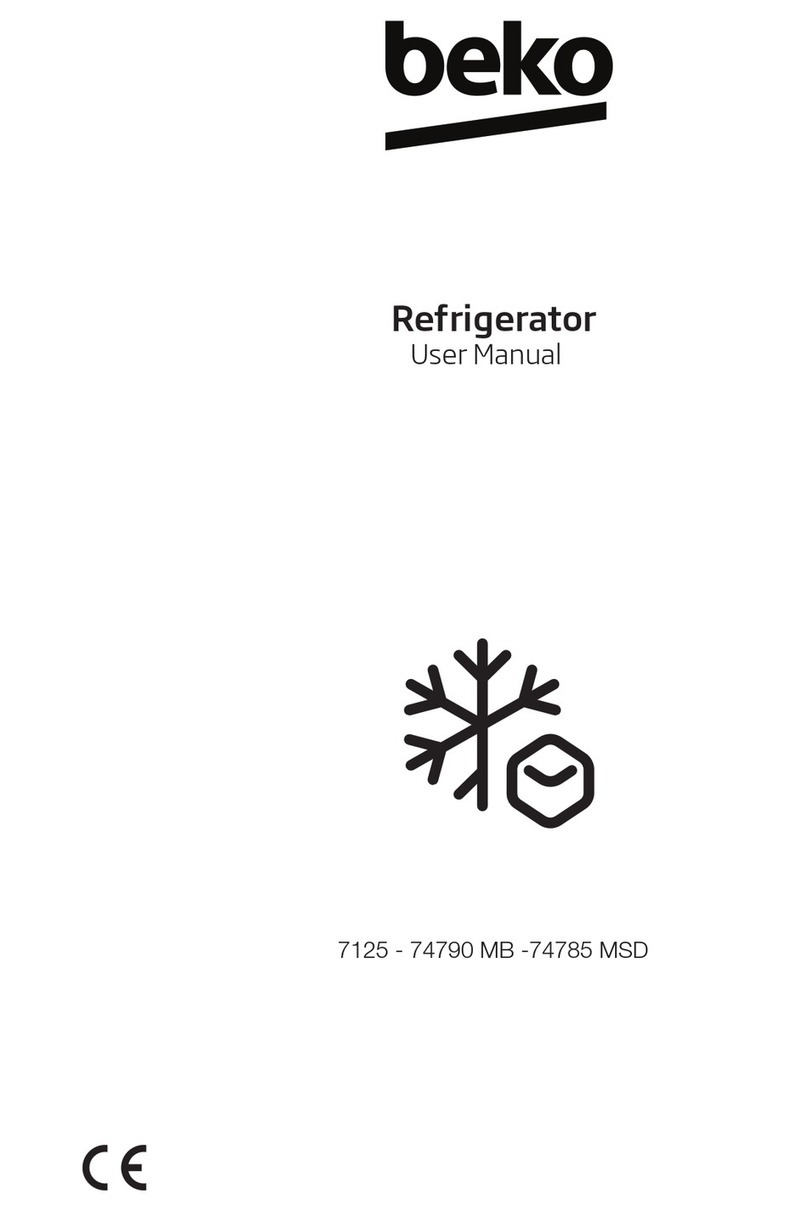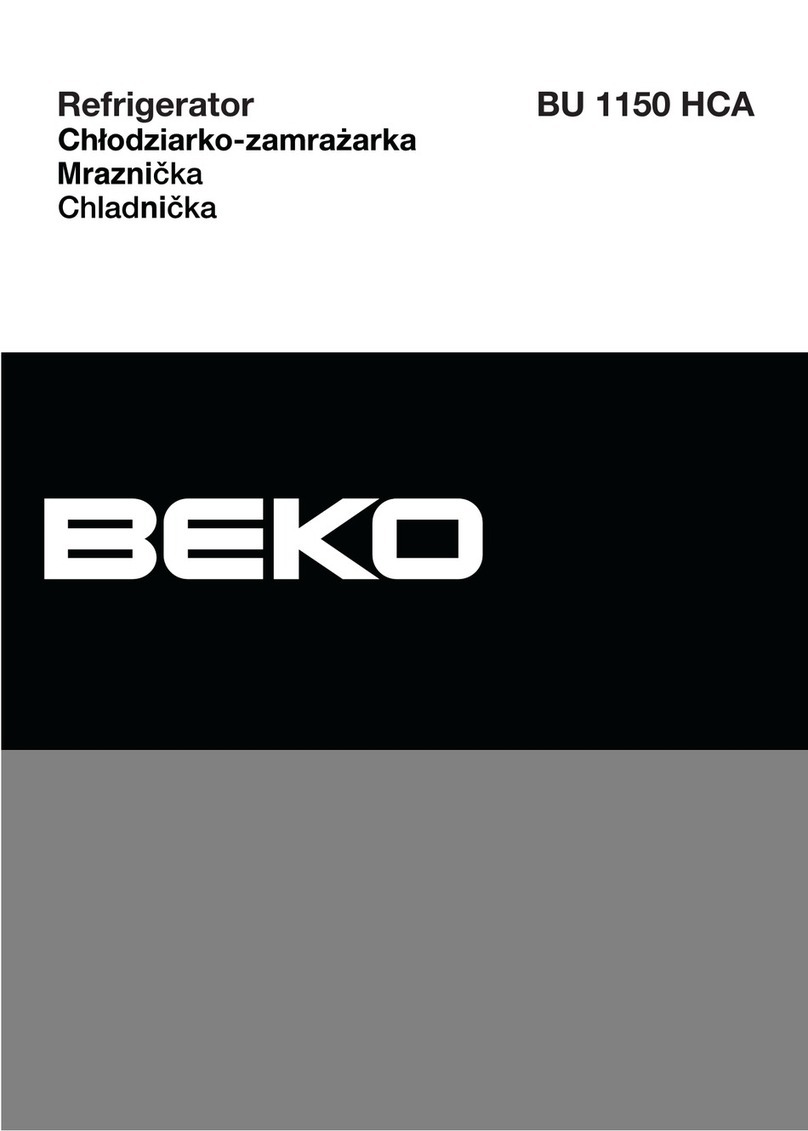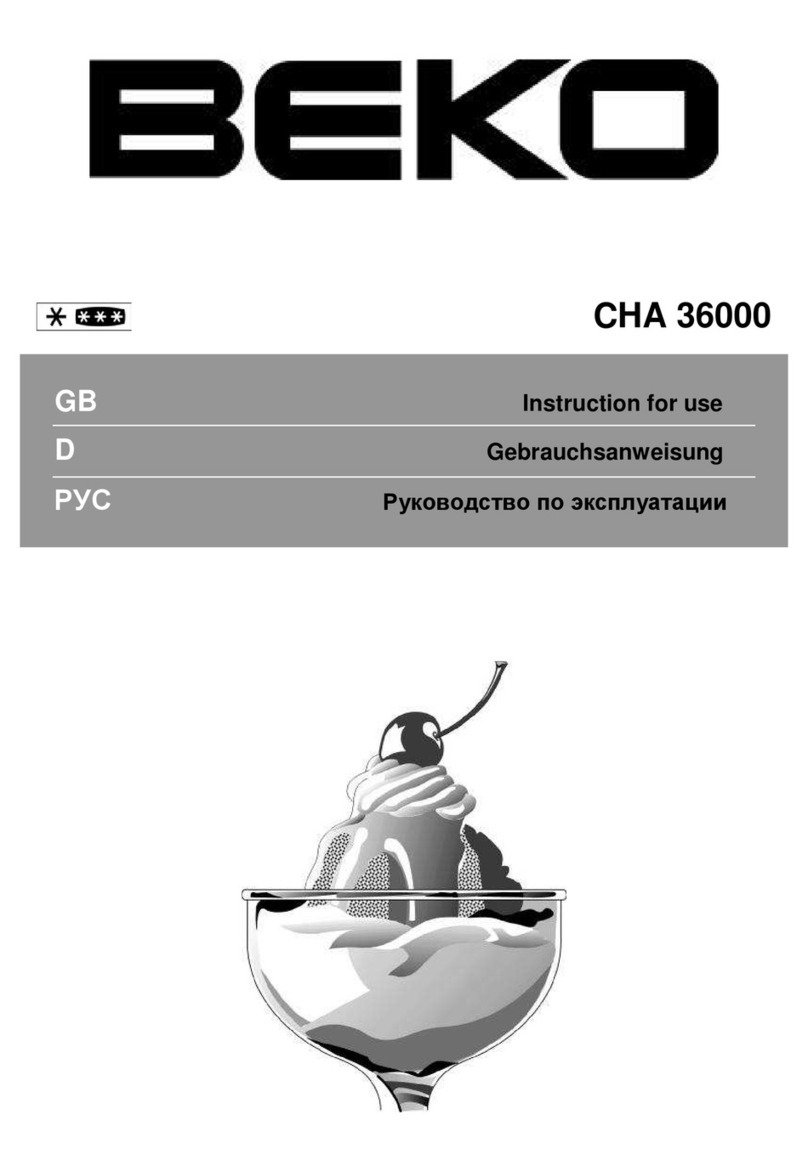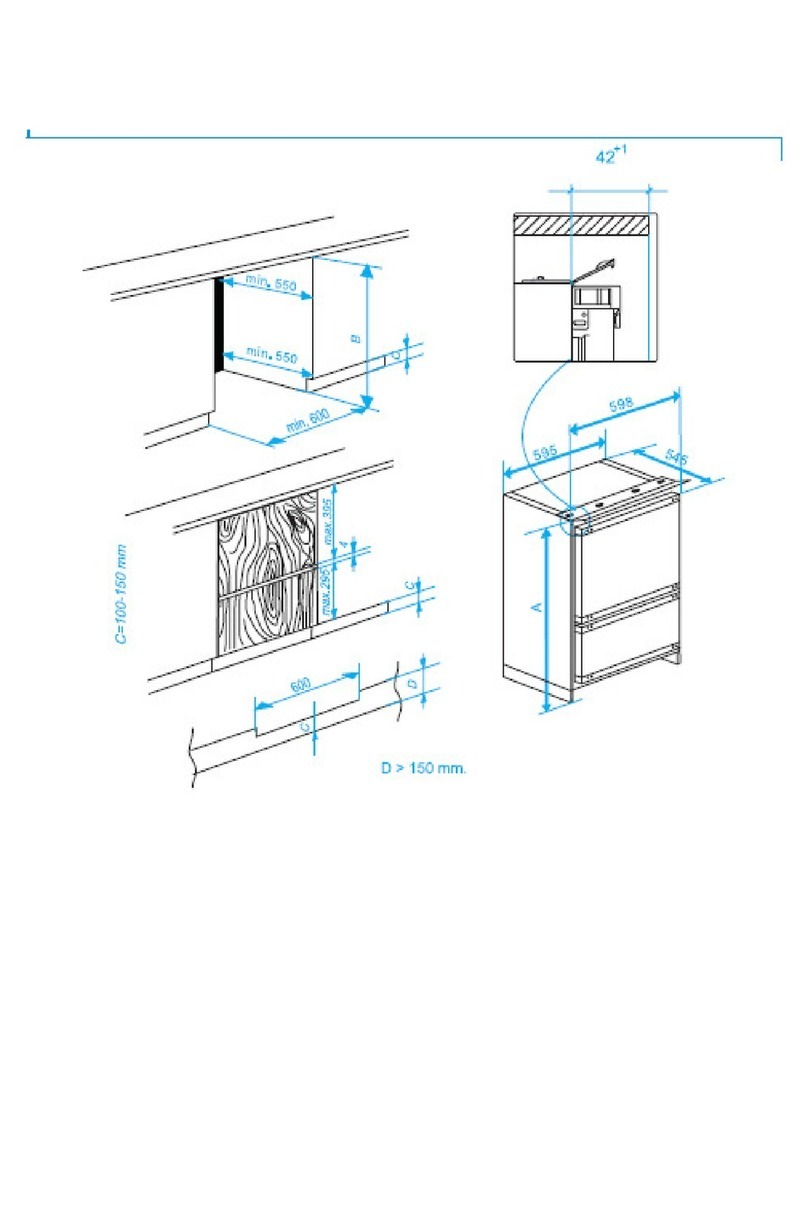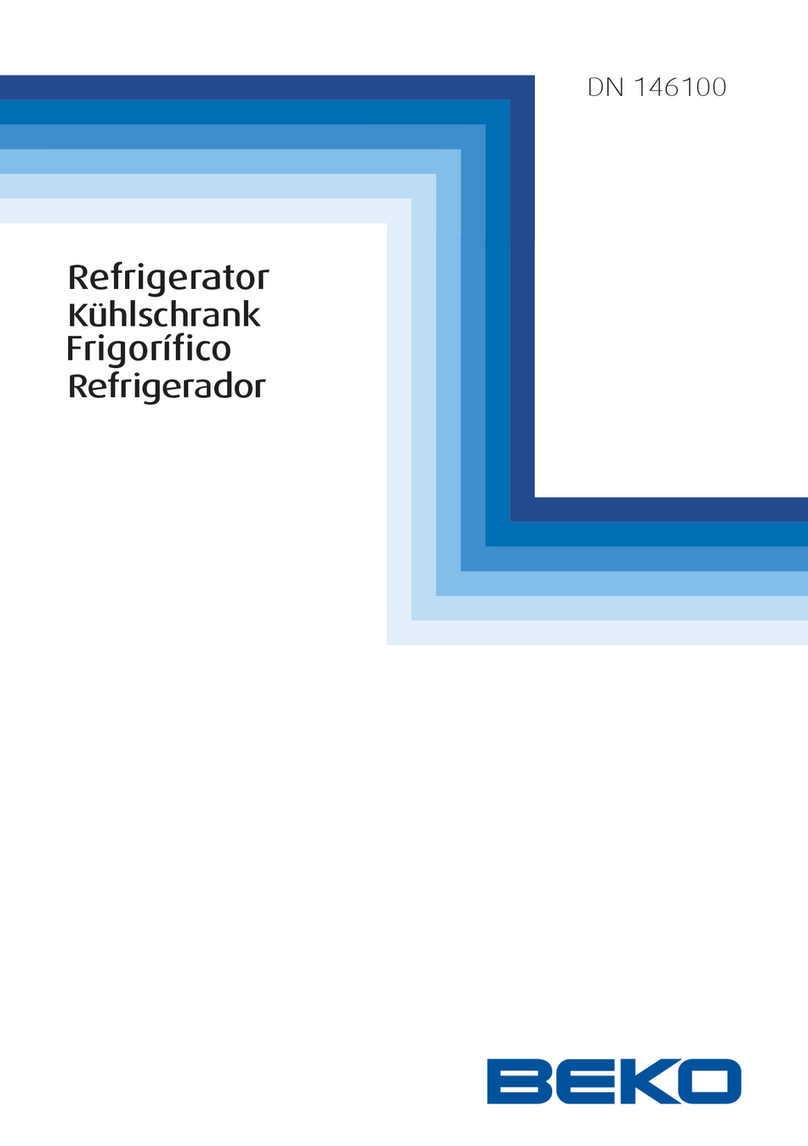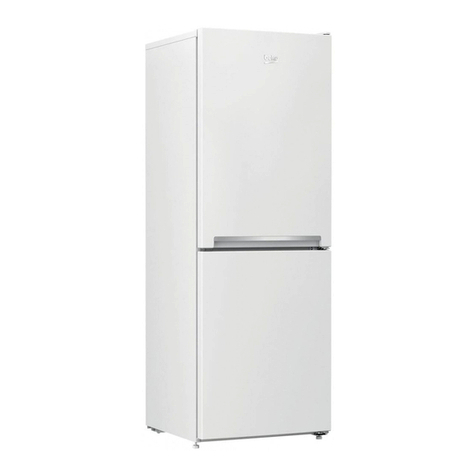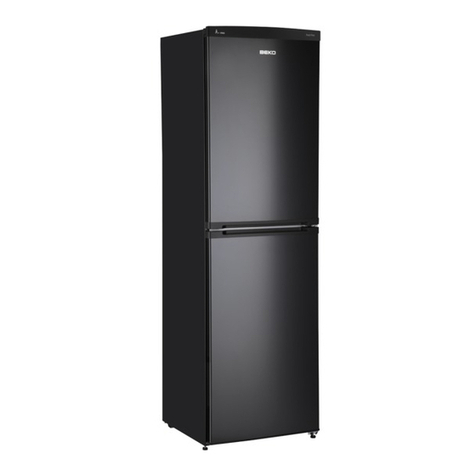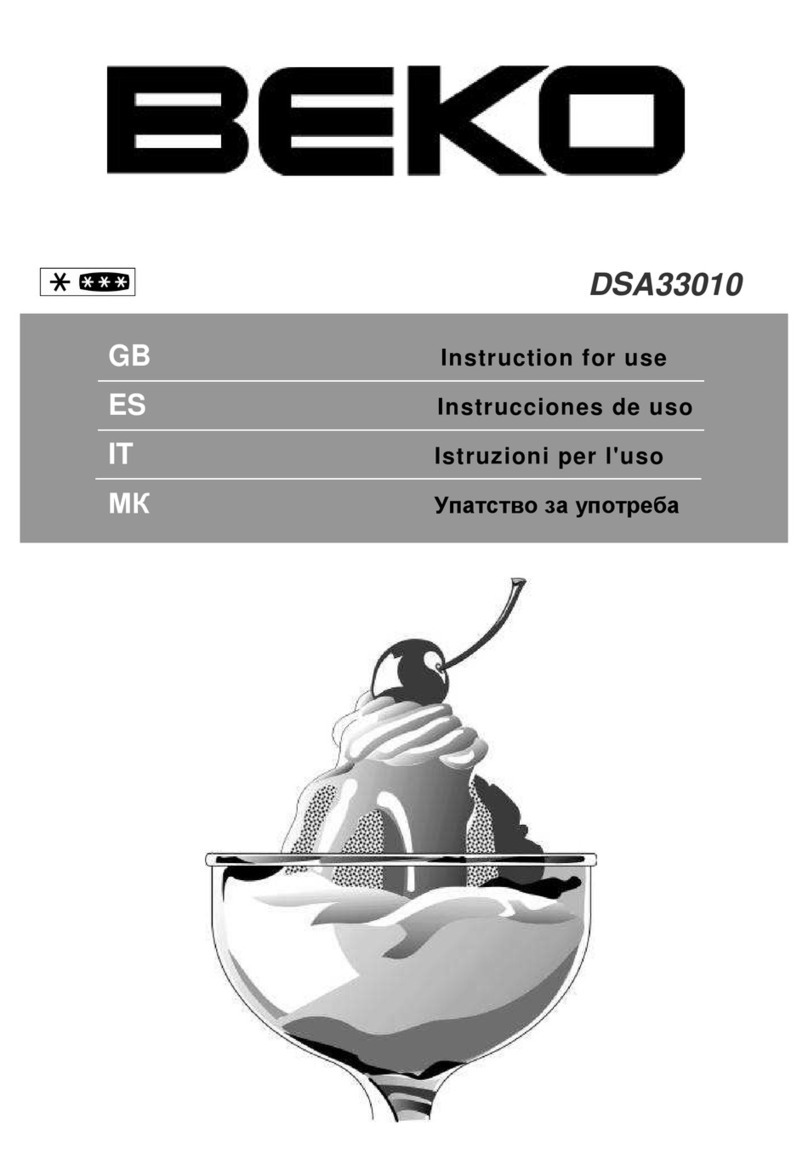Dear Customer,
We hope that your product, which has been produced in modern plants and
checked under the most meticulous quality control procedures, will provide you
an e
Therefore, read this entire user manual carefully before using the product and
keep it as a reference. If you handover the product to someone else, give the
user manual as well.
The user manual will help you use the product in a fast and safe way.
• Read the manual before installing and operating the product.
• Make sure you read the safety instructions.
• Keep the manual in an easily accessible place as you may need it later.
• Read the other documents given with the product.
Remember that this user manual is also applicable for several other models.
Di r
Explanation of symbols
Throughout this user manual the following symbols are used:
Important information or useful tips.
Warning against dangerous conditions for life and property.
Warning againstelectric voltage.
1 Your Refrigerator .......................................2
2 Important Safety .......................................2
Warnings ..........................................................2
Intended use ...................................................2
General safety .................................................3
For products with a child safety ...............5
Compliance with WEEE Directive and
Disposing of the Waste Product ...............5
Package information ....................................5
HC warning ......................................................5
Things to be done for energy saving ......6
Recommendations for the fresh food
compartment ..................................................6
3 Installation ...................................................7
Points to be paid attention to when the
relocation of the refrigerator .....................7
Electrical connection .....................................7
Disposing of the packaging .......................8
Placing and Installation ...............................8
Adjusting the legs .........................................8
Door Open Warning ......................................8
4 Preparation ..................................................9
CONTENTS
5 Using your refrigerator ..........................11
Indicator panel ...............................................11
Freezing fresh food .......................................11
Recommendations for preservation of
frozen food ......................................................11
Placing the food ............................................12
Deep-freeze information ............................12
Making Ice ........................................................12
Fan ......................................................................13
Crisper ...............................................................13
Chiller compartment ....................................13
6 Maintenance and cleaning ....................14
Protection of plastic surfaces .....................14
7 Troubleshooting ........................................15
